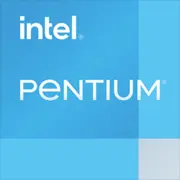Intel Pentium G3250T

Intel Pentium G3250T: Processore budget per compiti di base nel 2025
Architettura Haswell, 22 nm, 2 core e 35 W TDP - vale la pena considerare questa CPU oggi?
Caratteristiche principali: Architettura, processo tecnologico e prestazioni
Il processore Intel Pentium G3250T, rilasciato nel 2014, si basa sull'architettura microarchitettonica Haswell (4° generazione Core). È uno degli ultimi CPU Intel con supporto per il socket LGA 1150 e un processo tecnologico a 22 nm. I suoi parametri chiave sono:
- 2 core/2 thread senza tecnologia Hyper-Threading;
- Frequenza base di 2.8 GHz (turbo boost assente);
- TDP 35 W - uno dei più efficienti energeticamente della sua gamma;
- Grafica integrata Intel HD (4° generazione) con frequenza base di 200–1100 MHz;
- 3 MB di cache L3.
Prestazioni
Nel benchmark Geekbench 6 (2025), il G3250T ottiene 524 punti in monoguida e 909 in multi-threading. A titolo di confronto, il moderno budget Celeron G6900 (2023) ottiene circa ~1600/2400 punti. Tuttavia, per compiti di base (office, web, video HD) è sufficiente.
Caratteristiche chiave
- Efficienza energetica: adatto per PC compatti e HTPC.
- Supporto per le istruzioni SSE4.2 e AVX 2.0.
- Grafica integrata con output 4K tramite HDMI 1.4 (limite: 24 Hz).
Schede madri compatibili: Socket e chipsets
Socket LGA 1150 - standard obsoleto, rilevante nel 2013-2015. Chipset compatibili:
- H81, B85 - opzioni budget con funzionalità di base (2 slot RAM, SATA III);
- H87, H97 - supporto RAID, più porte USB 3.0;
- Z87, Z97 - overclock (ma G3250T non è sbloccato).
Caratteristiche da considerare nel 2025
Non vengono più prodotte nuove schede per LGA 1150. Nel mercato secondario, i prezzi variano da $20 (H81) a $80 (Z97). Esempio: ASUS H81M-K usato - $25–30.
Consiglio: Cerca schede con HDMI per l'uso in HTPC. Tieni presente che non tutti i modelli hanno USB 3.0 e SATA III.
Memoria supportata: DDR3 e le sue limitazioni
Il Pentium G3250T funziona solo con DDR3 (1333/1600 MHz) in modalità dual channel. Il massimo supportato è 32 GB (teoricamente), ma nella pratica la maggior parte delle schede supporta fino a 16 GB.
Problemi nel 2025
- La DDR3 è obsoleta: nuovi moduli non sono più prodotti, i prezzi dell'usato sono di $10–15 per 8 GB.
- Nessun supporto per DDR4/DDR5: l'upgrade non è possibile senza cambiare piattaforma.
Raccomandazione: Usa due moduli da 4 GB (totale 8 GB) per la modalità dual channel - questo migliorerà le prestazioni grafiche.
Alimentatori: Requisiti minimi
Con un TDP di 35 W, il processore è estremamente poco esigente nei confronti dell'alimentatore. Anche considerando gli altri componenti, basta un 300–400 W. Esempi:
- Be Quiet! System Power 10 400W ($45) - silenzioso e affidabile;
- Corsair CV450 ($50) - certificazione 80+ Bronze.
Consigli:
- Se non hai in programma una scheda video dedicata, un alimentatore di 250 W è sufficiente (ad esempio, FSP Hyper 300W, $35).
- Per una GPU di livello GTX 1650 serve almeno 350 W.
Pro e contro del Pentium G3250T
Pro:
- Basso consumo energetico - ideale per NAS o media center;
- Prezzo contenuto: CPU usata costa $15–20;
- Prestazioni sufficienti per compiti di base.
Contro:
- Solo 2 core - la multitasking è limitata;
- Nessun supporto per standard moderni (DDR4, PCIe 4.0);
- iGPU debole: giochi solo a risoluzioni fino a 720p.
Scenari d'uso: Dove è ancora rilevante il G3250T?
1. PC da ufficio: Lavorazione di documenti, browser, Zoom.
2. Home Theater (HTPC): Streaming video 1080p, 4K (con limitazioni).
3. Server/NAS: Basso consumo energetico e potenza sufficiente per l'archiviazione dei file.
4. Progetti educativi: Assemblaggio di un PC per insegnare le basi dell'IT.
Esempio pratico: Un utente ha assemblato un HTPC su G3250T, ASRock H81M-VG4 e 8 GB di DDR3. Il sistema consuma 45 W sotto carico e riproduce video tramite Plex.
Confronto con i concorrenti
Intel Celeron G5905 (2020, 2 core, 3.5 GHz):
- Prestazioni superiori (+30% in Geekbench 6);
- Supporto per DDR4;
- Prezzo nuovi - $50 (contro $15–20 per usato G3250T).
AMD Athlon 3000G (2019, 2 core/4 thread, Vega 3):
- Grafica migliore;
- Supporto per DDR4;
- Usato - $40–50.
Conclusione: G3250T vince solo in prezzo, ma perde in prestazioni e tecnologie moderne.
Consigli pratici per l'assemblaggio
1. Scheda madre: Scegli modelli con HDMI (ad esempio, Gigabyte H81M-H).
2. Memoria: 8 GB DDR3 (2×4 GB) - ottimale per Windows 10/11.
3. Storage: Assicurati di avere un SSD (ad esempio, Kingston A400 240 GB, $25) - accelera il funzionamento del sistema.
4. Raffreddamento: Dissipatore standard è sufficiente, ma per il silenzio considera il Deepcool GAMMAXX 200T ($15).
5. Case: Mini-ITX (Fractal Design Node 304) per un HTPC compatto.
Importante: Installa Linux (Lubuntu o Xubuntu) se prevedi di usare il sistema per compiti leggeri - diminuirà il carico sull'hardware.
Conclusione finale: A chi si adatta il Pentium G3250T nel 2025?
Questo processore è la scelta per chi:
- Assemblando un PC economico per l'ufficio o un server;
- Valorizza basso consumo energetico;
- Non richiede elevate prestazioni in giochi o montaggio.
Perché scegliere il G3250T?
Con $50–70 puoi assemblare un sistema di base (CPU+scheda madre+RAM+SSD), il che è 2-3 volte più economico rispetto ai moderni equivalenti. Tuttavia, per qualsiasi compito oltre i più semplici, è meglio aggiungere $100–150 e acquistare un Core i3 di 8a generazione usato o un nuovo Celeron.
Conclusione: G3250T è una soluzione di nicchia per appassionati e minimalisti, ma non per l'utente medio.
Di base
Specifiche della CPU
Specifiche della memoria
Specifiche della GPU
Varie
Classifiche
Rispetto ad altre CPU
Condividi sui social media
Oppure linkaci
<a href="https://cputronic.com/it/cpu/intel-pentium-g3250t" target="_blank">Intel Pentium G3250T</a>